Foreword
The Convergence of Knowledge
By J.D. Talasek and Alana Quinn
Co-editors
It may seem odd that a prestigious science institution has an art collection. But if one considers the functionality of art, it may not seem such a foreign concept. The methodology of science requires rational objectivity—a certain distance. And yet, the impact and importance of science on our daily lives, not to mention its contributions to society as a whole, can be intensely individual. Our health, food, transportation, and shelter, to mention only a few human endeavors, are all enhanced by scientific knowledge and discovery. How and why we do the things we do can be understood through art and the humanities. The connection between art and science requires a linkage, a way of making sense of the duality. Art, its processes, and the objects that are generated from it potentially create a platform to consider the personal. It creates a space to make sense of complex ideas, to rethink cultural constructs, and to raise questions of ethics and equality. Science relies on the rational while art embraces the intuitive. They share characteristics of creativity and discovery; both have the power to generate a sense of wonder and to evoke curiosity. Art, including the works reproduced in this catalogue that are inspired by science, links the rational and the intuitive into a relatable system. Work at the intersection of art and science provides a lens that informs our perception and encourages us to look at things anew, from different angles that can generate insight.
This catalogue is the second volume representing the art collection of the National Academy of Sciences (NAS). The first volume, Convergence, was produced in 2012. Convergence II, on the surface, documents the acquisitions over the past decade and reflects the exhibition history curated by the office of the Cultural Programs of the NAS (CPNAS). New work is acquired from temporary exhibitions and the collection becomes a record of that history. Additionally, over the past decade, CPNAS began producing e-catalogues of the exhibitions to create a comprehensive record of the artwork displayed at the NAS Building. To emphasize the concept that artwork is a platform for discussion, scholars and experts from diverse backgrounds have contributed thoughtful essays on a myriad of ideas generated by the exhibitions. Many of the essays are included in this volume alongside the artwork.
One function of art is to reflect and preserve the ideas, perceptions, and values of the time. Much has happened over the past decade, the period in
which most of the work in this catalogue was produced and acquired. The climate change crisis and our relationship to the environment are reaching a critical crescendo. Issues stemming from racial inequality appear in the headlines on a near-daily basis. We have experienced the worst pandemic in more than a century. In this context, questions arise: What is the role of science as well as the arts and humanities in making sense, understanding, and connecting us? Can art and science perhaps generate empathy? Changing technologies as well as collaborative methodologies have transformed the processes of science and the humanities in interesting and dynamic ways. The works in this catalogue represent the context and complexity of our time. As you look through the catalog, consider the ideas generated by the artists and their potential for provoking discussion and engagement.
Art in the NAS collection reflects a growing number of practitioners around the world who are interested in the complexity and convergence of knowledge to advance research. These artists are also seeking to create a more ethical and inclusive application of advanced knowledge to the benefit of society. These creatives exist in all disciplinary areas and question the limitations of boundaries that separate them. Science does not exist in a bubble. It is driven by discovery, innovation, and the need to understand the world around us and our relationship to it. Because similar processes exist in different disciplinary practices, understanding one can inform and benefit the other. By forming discussion around art objects like those in this collection, CPNAS strives to deepen our understanding of the complex relationship between epistemologies and to share these ideas with the public.
We would like to express our gratitude to Dr. Marcia McNutt, President of the NAS. It is with the support of President McNutt and the Committee on Science Programming that we are able to produce this catalogue. Their vision allows CPNAS to directly serve the NAS’s mission by engaging the public with science through the lens of the arts and humanities. We also would like to express our appreciation for the support we have received from Kenneth R. Fulton, Executive Director of the NAS. Fulton, who started working for the NAS in 1971, has seen the arts program grow from the late 1970s. We are grateful for his leadership, insight, and mentorship.

Library and Rotunda, 2012
Mixed media on linen
62 x 70 inches each
The architecture of the NAS Building inspired Cheryl Goldsleger to create these paintings. Working with architectural imagery throughout her career, Goldsleger is fascinated by the way that structures are built and the diverse needs they satisfy. The NAS Building sparked her interest as a symbol of the history and significance of science and scientific discoveries.
Goldsleger conducted research in the NAS Archives, studied architect Bertram Grosvenor Goodhue’s original building plans, and gathered information from numerous other sources. These paintings were featured in The NAS Project exhibition at the NAS in 2013 in celebration of the NAS’s 150th anniversary.
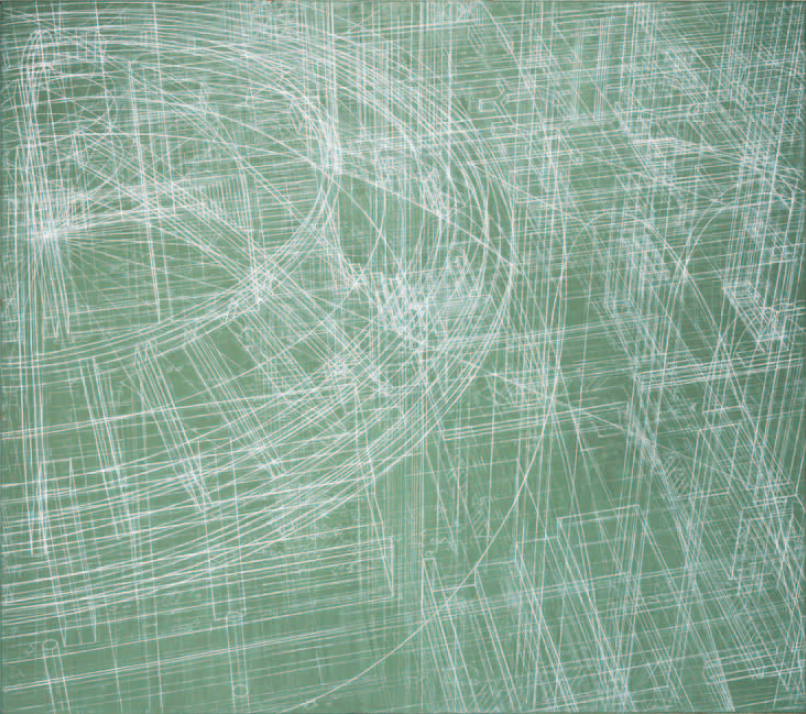
The Lake Project 3, 2001
Chromogenic print
31.25 x 31.25 inches
Photographer David Maisel’s early work focuses primarily on environmentally degraded sites. His images show the physical impact on the land from industrialization such as mining, logging, water reclamation, and military testing. Because these sites are often remote and inaccessible, Maisel frequently works from an aerial perspective, which enables him to capture photographic evidence that is otherwise unattainable. The absence of easily recognizable points of reference within the image eliminates any sense of scale, causing the viewer’s mind to oscillate between the damaged landscape and the beautiful abstract composition.

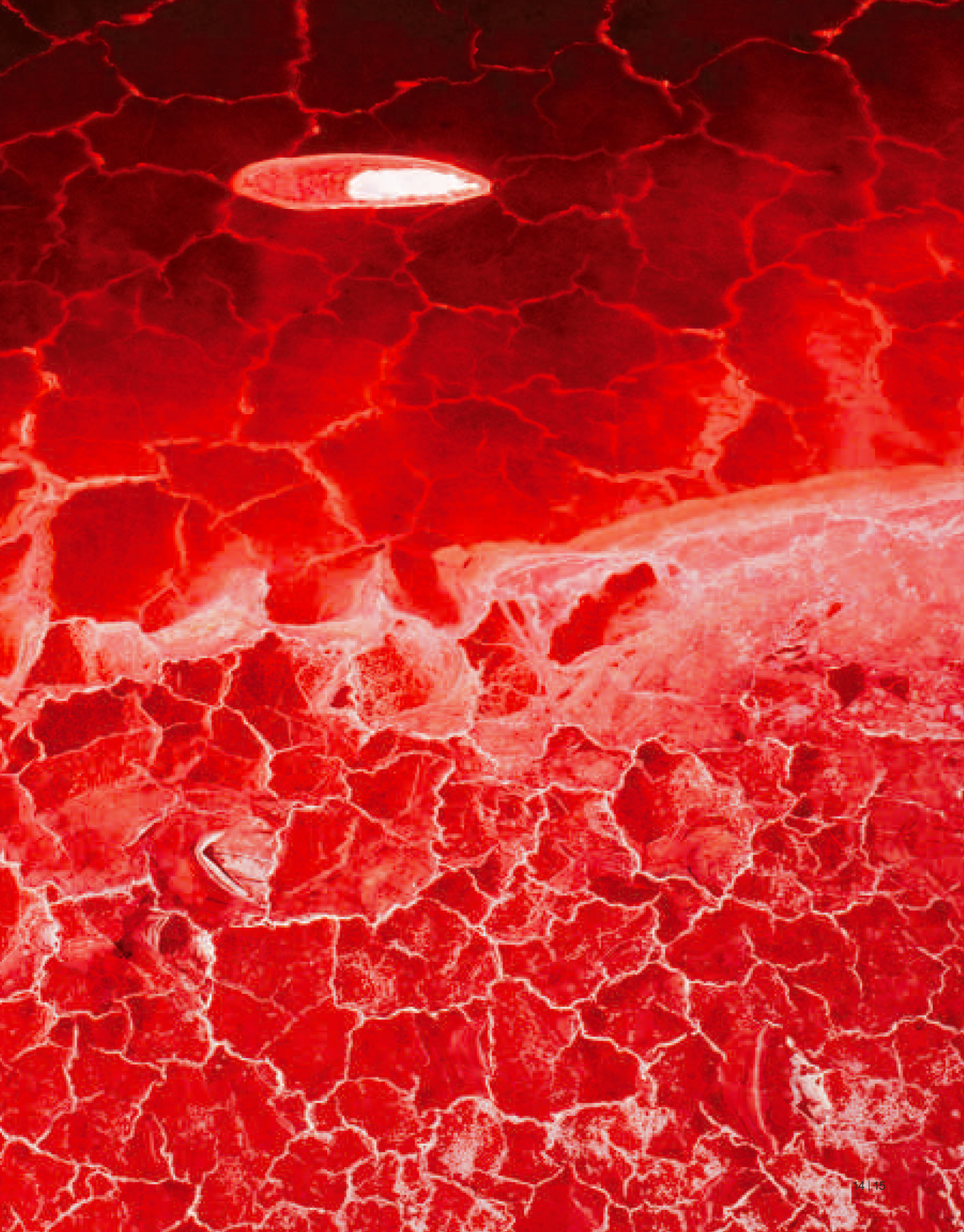
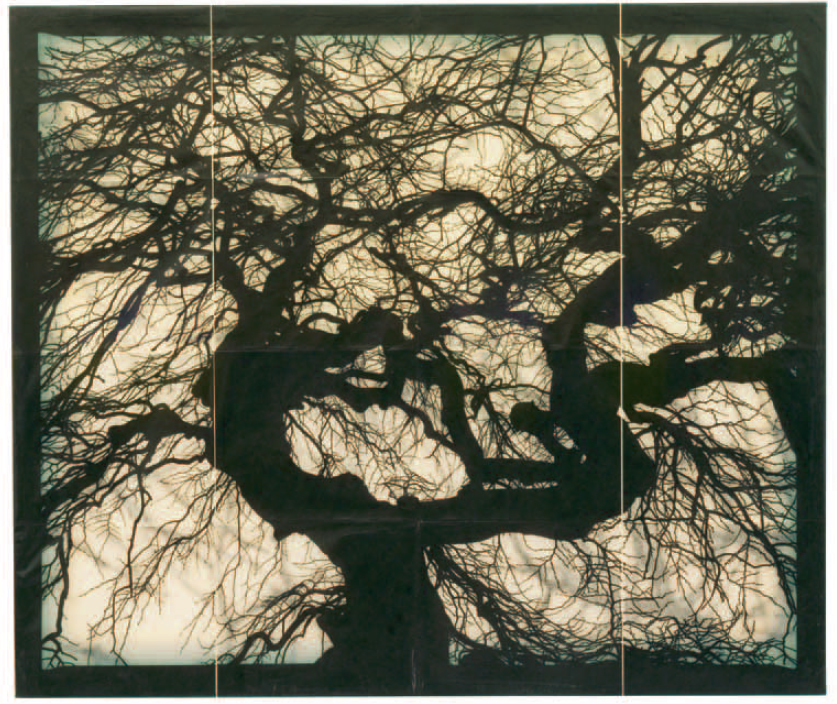
Structure of Thought 15, 2001–04
MIS and Lysonic inkjet prints on Thai mulberry, Gampi, and tissue papers with wax, encaustic, and varnish
34 x 40 inches
Identical twins Mike and Doug Starn began collaborating as teenagers. Their work occupies a unique position within contemporary art practices because it blurs the boundaries between photography, video, installation, sculpture, and painting. The Starns recently embarked on a metaphorical exploration of light as a requisite for photography and vision, and as a symbol of enlightenment. Their investigations have led them to create numerous bodies of work in which they feature light as a life force, and draw subtle parallels between the structure of flora and the human body. This image from the Structure of Thought series depicts a branching tree that resembles the microscopic dendrites of neurons in the brain.
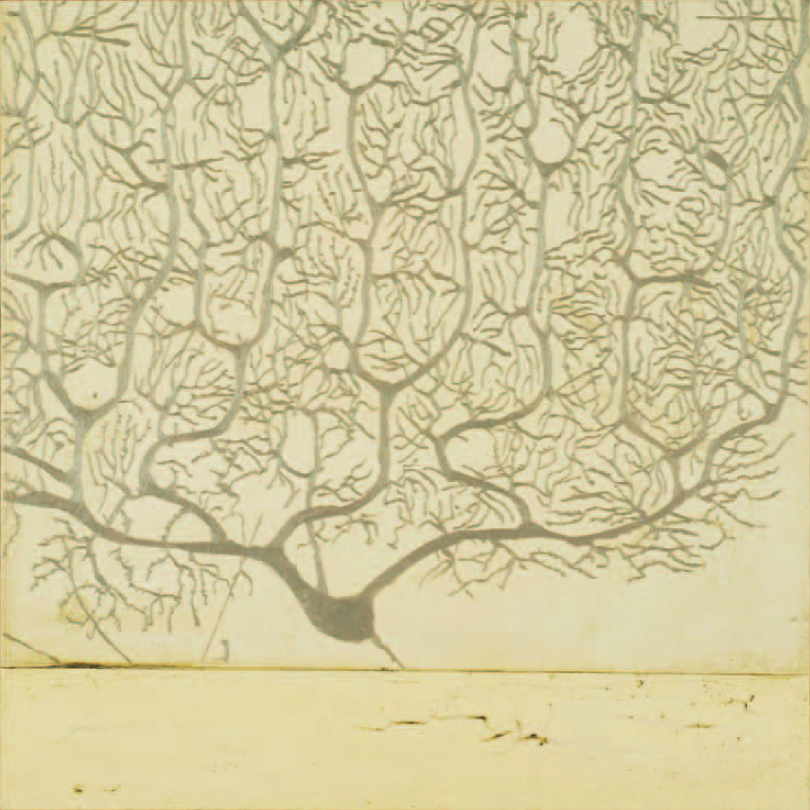
Golgi’s Door, 2007
Mixed media on canvas
20 x 20 inches
Katherine Sherwood explores the evolution of medical imagery in her artwork. This painting is based on the early sketches of Italian physician and scientist Camillo Golgi, who, in 1873, developed a method of staining nerve tissue to make the complex structure of the brain visible. Known as Golgi’s method, it was later used by Spanish neuroanatomist Santiago Ramón y Cajal to reveal much about the organization of the nervous system. Sherwood is a professor at the School of Art Practice at the University of California, Berkeley. She exhibits her work regularly in California and often in New York. In 2000, her work was included in the Whitney Museum of American Arts’ Biennial Exhibition in New York City.
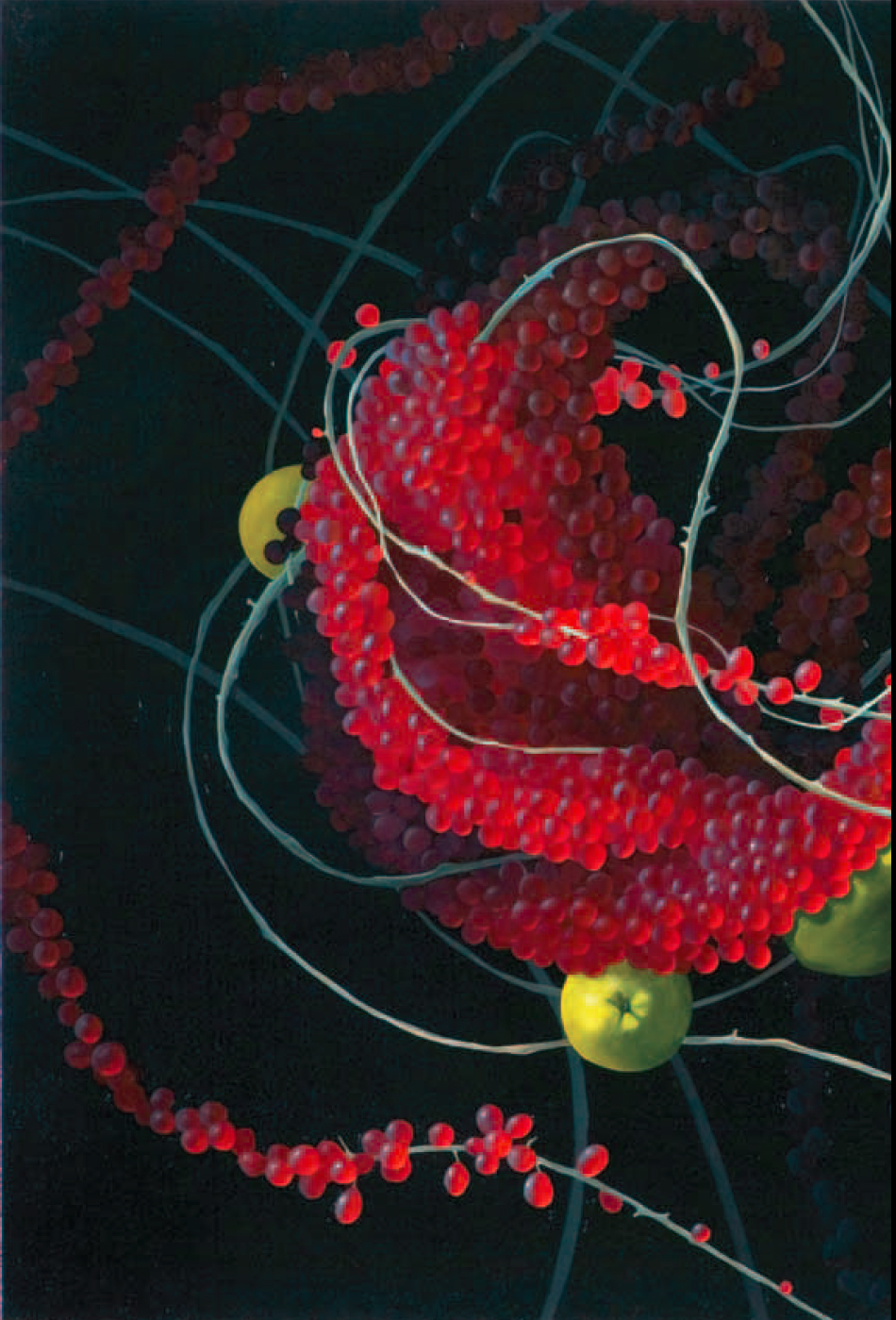
Still Life with Villin Headpiece II, 2007
Oil on canvas
30 x 48 inches
Mia Brownell paints intertwined clusters of fruit spiraling in meandering structures suspended in space. Employing dramatic chiaroscuro, Brownell’s still-life fantasies simultaneously reference Dutch Old Master paintings and the coiling structures of DNA, amino acids, and protein chains.
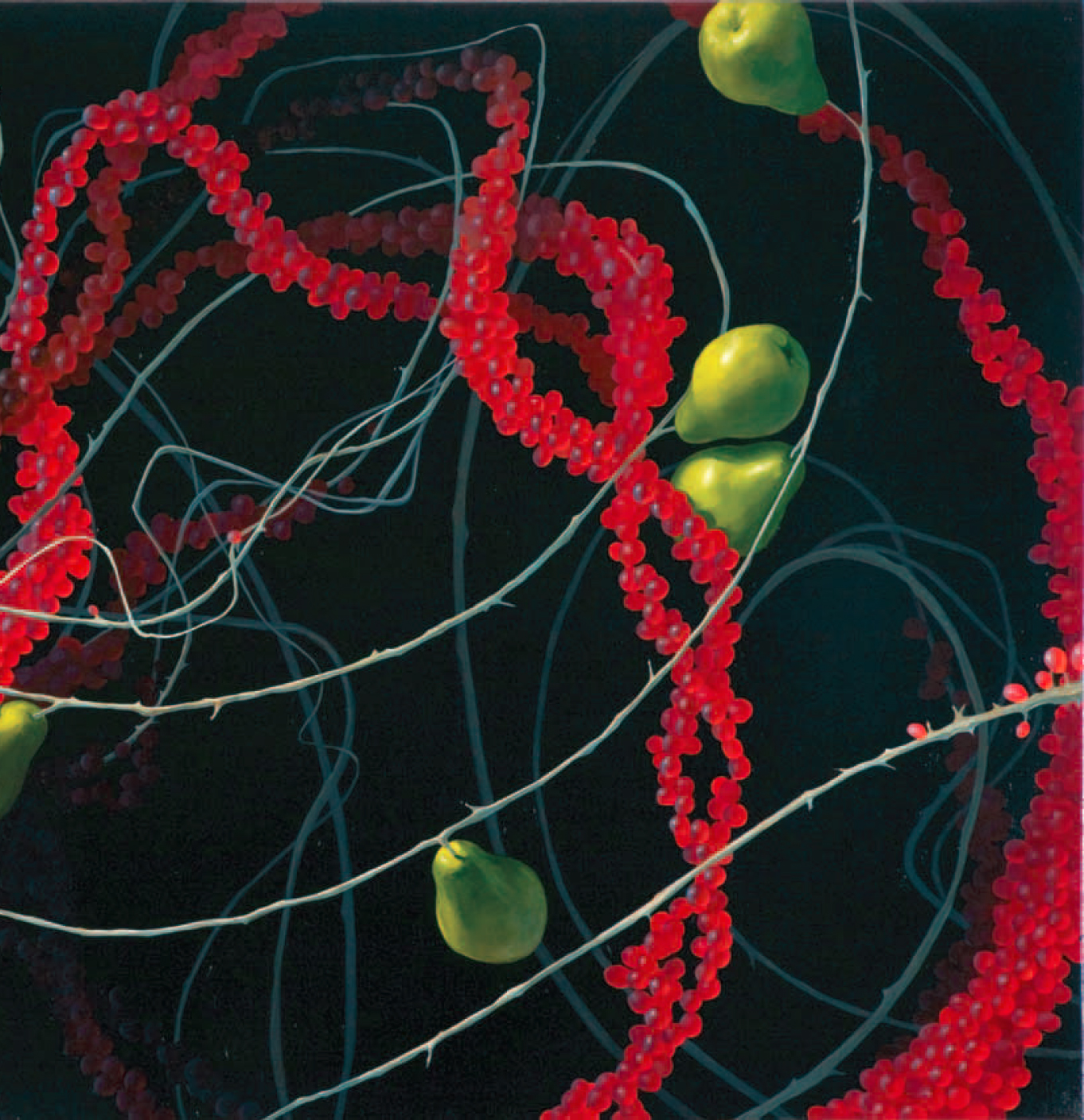

On the Origin of Species (after Darwin), 2008–09
India ink, graphite transfer, matte acrylic, and book pages on canvas
72 x 120 inches
This piece was commissioned by the Cultural Programs of the National Academy of Sciences in celebration of the 150th anniversary of the publication of On the Origin of Species (November 24, 1859) and the 200th anniversary of Darwin’s birth (February 12, 1809). Tim Rollins, teacher and conceptual artist, began instructing special education teenagers in the South Bronx
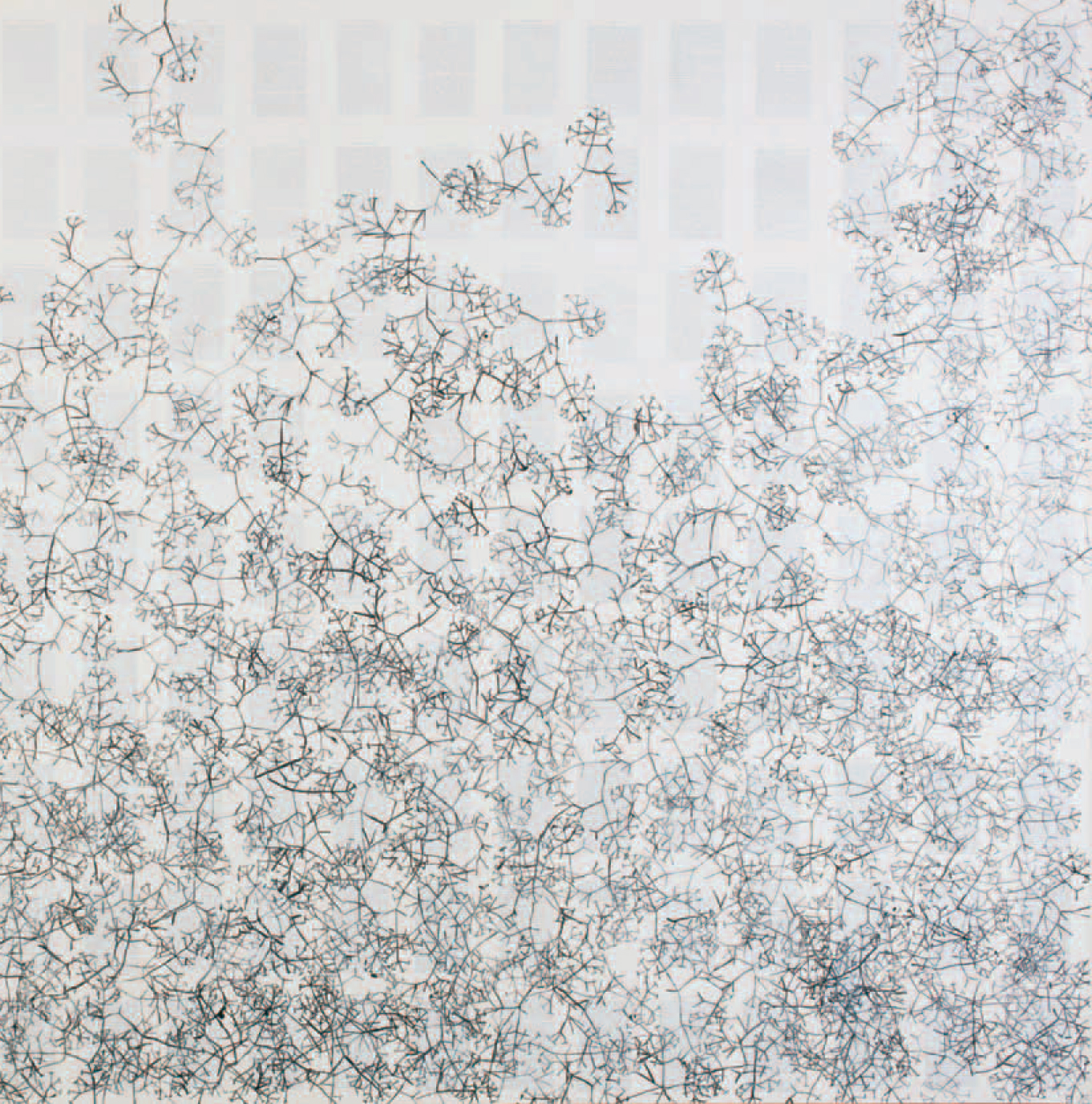
in the early 1980s. He developed an approach where the students, who named themselves K.O.S. (Kids of Survival), produced works of art based on classic literature. Challenging traditional teaching models, Rollins discovered that students would mentally engage concepts differently if their hands were also engaged. In the studio classroom, while discussing themes found in literature, students often drew or painted on pages of their books. The students later brought their drawings and ideas together to form collaborative works. In this piece, the artists took a visual cue from Charles Darwin’s journal—a sketch of what is frequently called the Tree of Life. Using a pochoir (stenciling) technique, the artists applied the deceptively simple line drawing repeatedly to the pages of Darwin’s text, forming a visually complex arrangement. Conceptually, using the simple sketch to construct a web-like form suggests the way in which Darwin’s idea has been the building block for contemporary biology.
RIP African Pompano and RIP Bluntnose Stingray, from the series Ghosts of the Gulf, 2013–14
Digital chromogenic prints on handmade Japanese paper
18 x 24 inches each
Ghosts of the Gulf is a series of prints made from scans of chemically cleared and stained specimens collected in the Gulf of Mexico after the 2010 Deepwater Horizon oil spill. These species and numerous others may be in decline. These prints are meant to be seen as apparitions. The chemical process of clearing and staining specimens involves multiple steps, revealing the complex architectural anatomy of these beautiful species. Although the images look like brightly colored X-rays, Ballengée actually scanned each chemically altered specimen millimeter by millimeter to make detailed recordings. He then assembled the layers in Photoshop to create the final artworks.
















